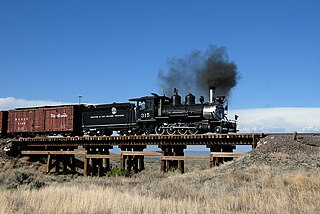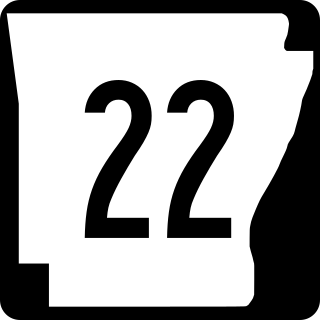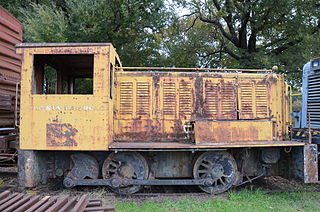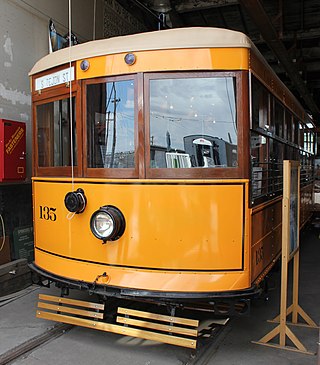
Fort Smith is the third-most populous city in Arkansas and one of the two county seats of Sebastian County. As of the 2020 census, the population was 89,142. It is the principal city of the Fort Smith, Arkansas–Oklahoma Metropolitan Statistical Area, a region of 298,592 residents that encompasses the Arkansas counties of Crawford, Franklin, and Sebastian, and the Oklahoma counties of LeFlore and Sequoyah.

A heritage railway or heritage railroad is a railway operated as living history to re-create or preserve railway scenes of the past. Heritage railways are often old railway lines preserved in a state depicting a period in the history of rail transport.

Conservation and restoration of rail vehicles aims to preserve historic rail vehicles.

A Birney or Birney Safety Car is a type of streetcar that was manufactured in the United States in the 1910s and 1920s. The design was small and light and was intended to be an economical means of providing frequent service at a lower infrastructure and labor cost than conventional streetcars. Production of Birney cars lasted from 1915 until 1930, and more than 6,000 of the original, single-truck version were built. Several different manufacturers built Birney cars. The design was "the first mass-produced standard streetcar " in North America.

The TECO Line Streetcar is a heritage streetcar transit line in Tampa, Florida, run by the Hillsborough Area Regional Transportation Authority (HART), owned by the city of Tampa, and managed by Tampa Historic Streetcar, Inc. It connects Downtown and Channelside to the historic Ybor City district. There is also an "In-Town" trolley-replica bus system that connects Downtown, Channelside, and Harbour Island.

The Northern Texas Traction Company was a subsidiary of Stone & Webster that operated the streetcar system and interurban lines in Fort Worth, Texas.

Old Pueblo Trolley is a non-profit, educational corporation based in Tucson, in the U.S. state of Arizona, that is dedicated to the preservation of Arizona's mass transit history. The name also commonly refers to the heritage streetcar line which OPT began operating in 1993, on which service is currently indefinitely suspended. OPT consists of three divisions that each fill a specific role in preserving the state's mass transit history. The divisions are the Street Railway Division, Motor Bus Division and the Museum Division.

The Metro Streetcar, formerly known as the River Rail Streetcar, is a two line heritage streetcar system operating in Little Rock and North Little Rock, Arkansas. It has operated since November 1, 2004. Most recently expanded in 2007, the streetcar now operates over 3.4-mile (5.5 km) of track in a figure-eight loop pattern. The Metro Streetcar is operated by Rock Region Metro. In 2022, the system had a ridership of 22,600.

Highway 22 is an east–west state highway in the Arkansas River Valley. It is maintained by the Arkansas State Highway and Transportation Department (AHTD). The highway runs 75.60 miles (121.67 km) from US 64/US 71B east to Highway 7 in Dardanelle. Following the historic stagecoach line of the cross-country Butterfield Trail, the highway is one of the original 1926 state highways. It is designated by the AHTD as the True Grit Trail.

The Fort Collins Municipal Railway operated streetcars in Fort Collins, Colorado, from 1919 until 1951. Since 1984, a section of one of the former routes has been in operation as a seasonal heritage streetcar service, under the same name, running primarily on Spring and Summer weekends. The heritage service is operated by volunteers from the Fort Collins Municipal Railway Society (FCMRS). The streetcar in use on the heritage line, Birney "Safety" Streetcar No. 21, is listed on the National Register of Historic Places.

The McKinney Avenue Transit Authority (MATA), a non-profit organization, operates the M-Line Trolley in Dallas, Texas. In operation since 1989, it is an example of a heritage streetcar running historic cars. The M-Line Trolley operates 7 days per week, 365 days per year. Since 2002, the M-Line Trolley is free to the public, thanks to donations and a joint operating subsidy received from Dallas Area Rapid Transit (DART) and the Uptown Improvement District. The main stretch of the line runs along McKinney Avenue in Uptown between West Village and Klyde Warren Park / Dallas Arts District. The M-Line Trolley connects to the DART light rail system at CityPlace/Uptown on the northern end and St. Paul on the southern end.

The Shore Line Trolley Museum is a trolley museum located in East Haven, Connecticut. Incorporated in 1945, it is the oldest continuously operating trolley museum in the United States. The museum includes exhibits on trolley history in the visitors' center and offers rides on restored trolleys along its 1.5 mi (2.4 km) track as the Branford Electric Railway. In addition to trolleys, the museum also operates a small number of both trolleybuses and conventional buses.

The American Car Company was a streetcar manufacturing company based in St. Louis, Missouri, United States. It was one of the country's leading streetcar builders during the heyday of streetcar operation. The company was founded in 1891 by William Sutton and Emil Alexander, who had previously founded the Laclede Car Company in 1883 also in St. Louis, and had both got their start working in the streetcar business at St. Louis' horsecar manufacturer, the Brownell Car Company.

The Fort Smith Trolley Museum is a streetcar and railroad museum in Fort Smith, in the U.S. state of Arkansas, which includes an operating heritage streetcar line. The museum opened in 1985, and operation of its streetcar line began in 1991. Four vehicles in its collection, a streetcar and three steam locomotives, are listed on the National Register of Historic Places (NRHP). The now approximately three-quarters-mile-long (1.2 km) streetcar line also passes four NRHP-listed sites, including the Fort Smith National Historic Site, the Fort Smith National Cemetery, the West Garrison Avenue Historic District and the 1907 Atkinson-Williams Warehouse Building, which now houses the Fort Smith Museum of History.

Streetcars or trolley(car)s were once the chief mode of public transit in hundreds of North American cities and towns. Most of the original urban streetcar systems were either dismantled in the mid-20th century or converted to other modes of operation, such as light rail. Today, only Toronto still operates a streetcar network essentially unchanged in layout and mode of operation.
The Gomaco Trolley Company is a manufacturer of vintage-style streetcars, located in Ida Grove, Iowa, United States. The company has supplied replica-vintage streetcars to several transit systems in the US, and has also restored and rebuilt authentic vintage streetcars for some systems.

Maumelle Ordnance Works Locomotive 1 is a gasoline-powered, mechanically driven, two-axle railway locomotive which was built in 1942 by Vulcan Iron Works for the United States War Department's Maumelle Ordnance Works. It was added to the U.S. National Register of Historic Places in 2006 and is preserved at the Fort Smith Trolley Museum.

The Fort Collins Municipal Railway Car No. 22 is a streetcar listed on the U.S. National Register of Historic Places. Since 1995, the car has been located in Colorado Springs, Colorado.

Fort Collins Municipal Railway Birney Safety Streetcar No. 21 is a streetcar in Fort Collins, Colorado, listed on the U.S. National Register of Historic Places. Built in 1919 by the American Car Company for the Fort Collins Municipal Railway, it is a type of streetcar known as a Birney "Safety Car". It was listed on the National Register in 1984 and is one of fewer than 10 streetcars listed.


















